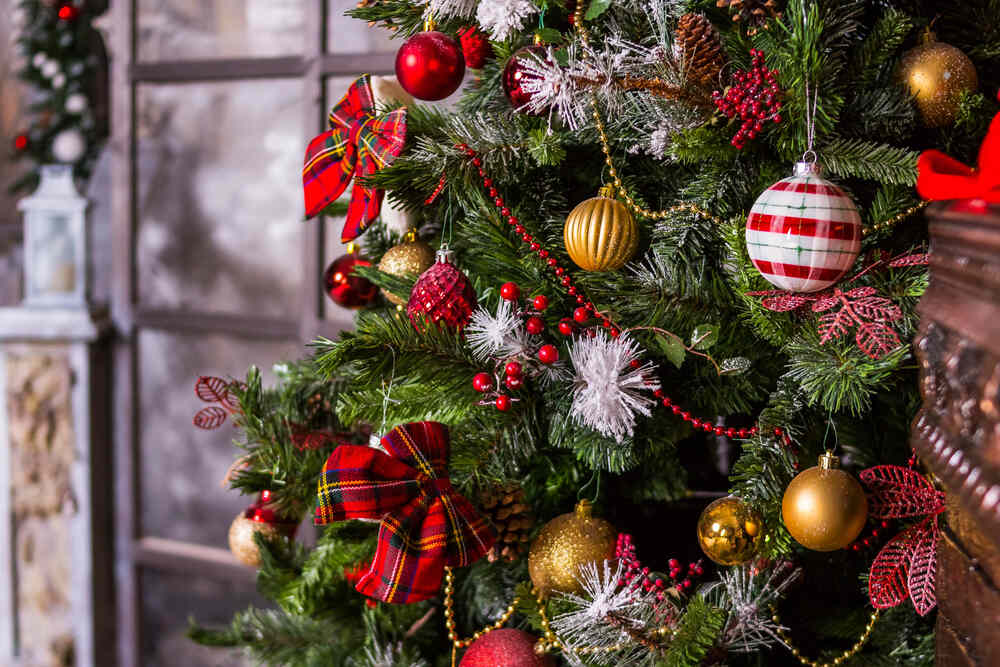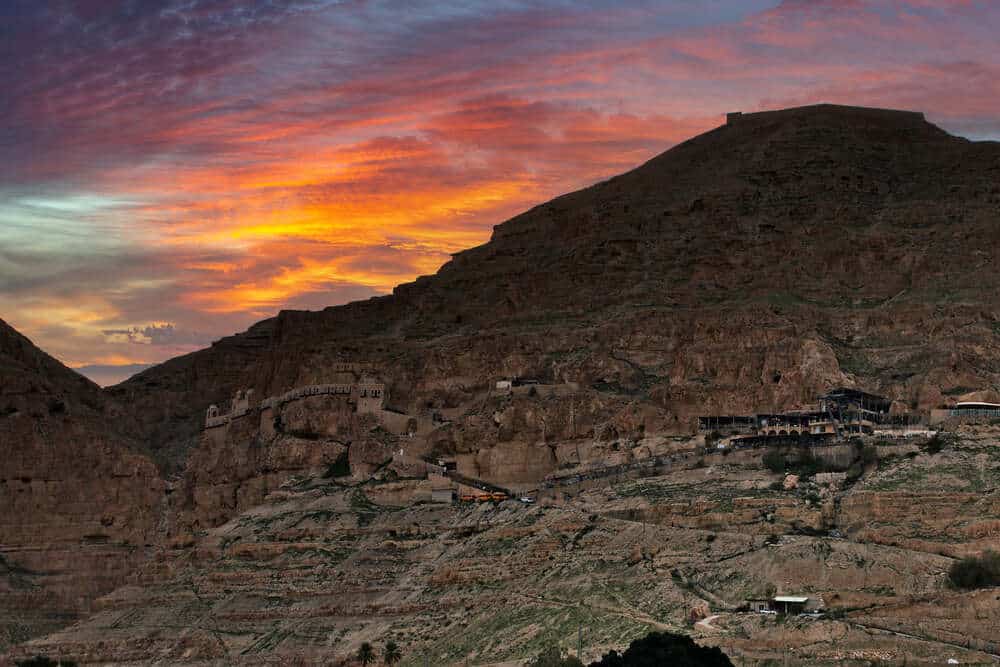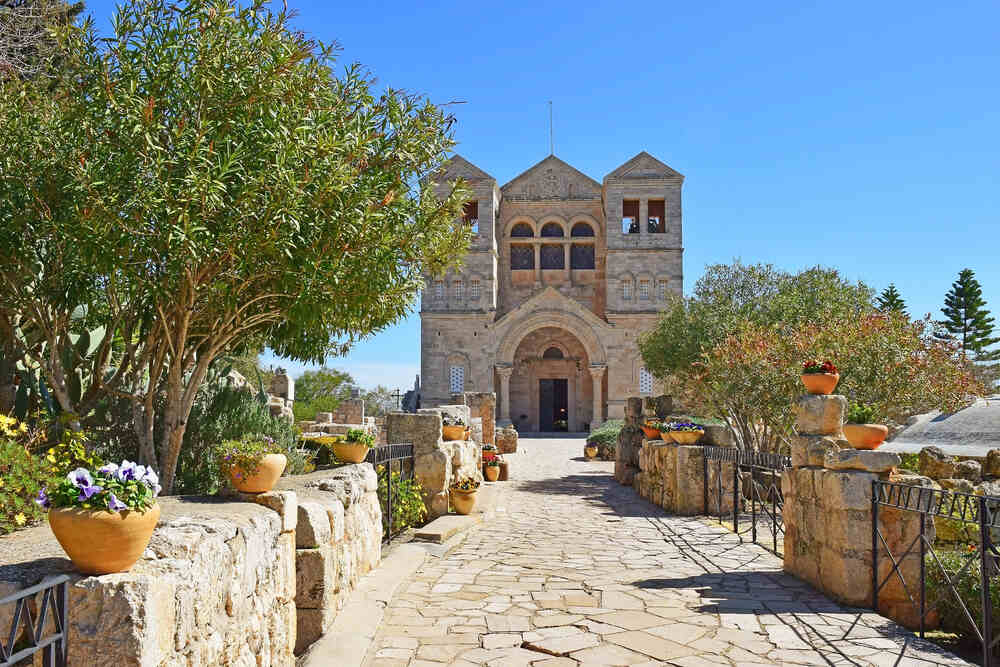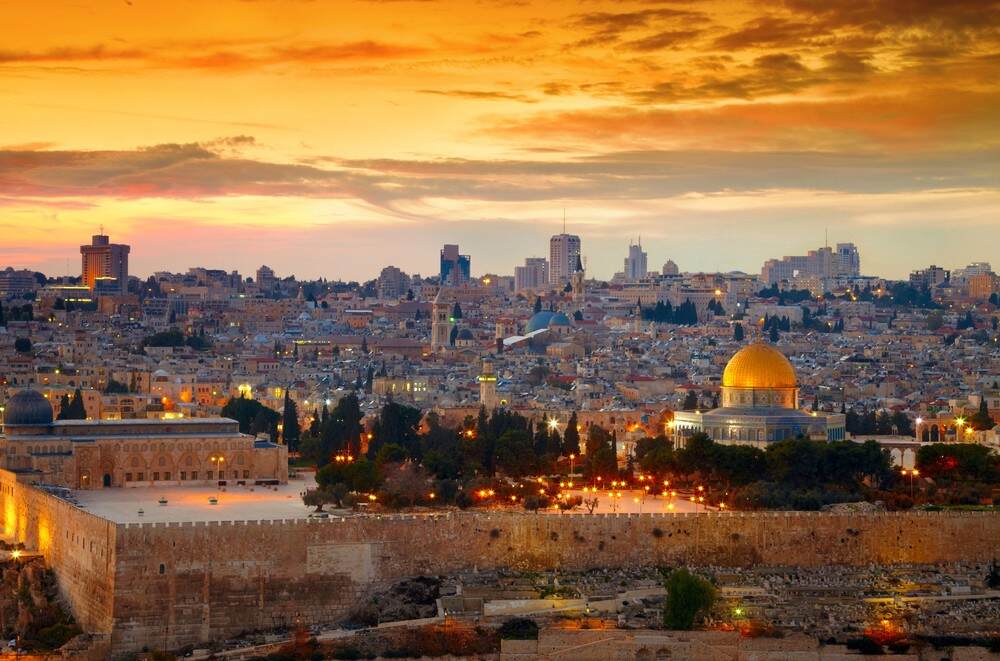As Advent begins, families around the world set up a decorated tree in their homes. Yet not everyone knows the true Christmas tree’s meaning in Christianity. More than a seasonal custom, the Christmas tree is a reminder of the saving work our Lord began at His birth—a mission the Church continues throughout the ages.
In this article, we explore the Christmas tree’s meaning, its history, the symbolism behind each element, and how this beautiful tradition can help us prepare our hearts for the coming of Jesus.
You can use the Catholic Mass Times app to find the nearest Catholic church with Mass, Confession, and Adoration schedules. It will surely help you! Download it now.
Where Does the Christmas Tree Come From?
Before the arrival of the Gospel, the ancient Germanic peoples celebrated the winter solstice. As part of the festivities, they decorated a large oak dedicated to the god Odin. This tree, known as Yggdrasil, represented the universe and the renewal of life.
According to an old tradition, St. Boniface—the great evangelizer of Germany and England—cut down that sacred oak and planted a fir tree in its place. He explained that its triangular shape pointed toward heaven and symbolized God’s unchanging, everlasting love. He decorated it with:
-
Apples, recalling the fruit of the tree of the knowledge of good and evil eaten by Adam and Eve—symbol of original sin and of human temptation.
-
Candles, as a sign of Christ, the Light of the World.
By the 4th century, in the catacombs of Rome, the evergreen tree already appeared as a Christian symbol of immortality.
During the Middle Ages, on December 24, towns would stage plays inspired by the story of Adam and Eve. At the center of the scenery stood a tree decorated with apples—representing the forbidden fruit and humanity’s fall—and with small pastry wafers symbolizing the Eucharist and salvation. Eventually, people began to place small “paradise trees” in their own homes.
Over time, this custom spread across Europe and eventually reached the Americas. Although apples were replaced by ornaments and candles by string lights, the Christian meaning of the Christmas tree remained intact.
By the 19th century, the tradition had taken the shape we know today. And in 1982, thanks to St. John Paul II, a massive Christmas tree was placed in St. Peter’s Square for the first time. The Pope wanted to highlight the true significance of the Christmas tree in a secularized world that had forgotten what we truly celebrate: the birth of our Redeemer.
What Is the Christmas Tree’s Meaning?
During the Angelus on December 19, 2004, St. John Paul II explained that the Christmas tree elevates the value of life: even in winter, when everything seems dead, its branches remain green. For that reason, it becomes a reminder that:
-
Life is a gift from God.
-
Through the Cross —the true “tree of life”— Christ saved us from sin and eternal death, giving us a new life in Him.
-
Thanks to the Cross, we can attain eternal life, the greatest gift God gave us through the Passion of His Son.
The tree also recalls the tree of temptation, the one in Eden from which Eve was tempted by the serpent —the tree of the knowledge of good and evil, from which Adam and Eve disobeyed God. Thus, the Christmas tree reminds us of our need for reconciliation: it calls us to prepare our hearts through repentance, prayer, and frequent reception of the sacraments, especially Confession.
On the other hand, it recalls the tree of life, which also stood in Eden. Its fruit granted Adam and Eve eternal life. The Bible says:
“See! The man has become like one of us, knowing good and evil! Now … he might reach out his hand, take also from the tree of life, and eat, and live forever.”
— Genesis 3:22 (USCCB) USCCB“Therefore the LORD God banished him from the garden of Eden, to till the ground from which he was taken. He stationed the cherubim and a flaming sword to guard the way to the tree of life.”
— Genesis 3:23-24 (USCCB) USCCB
That same tree reappears at the end of Sacred Scripture, in one of the final verses of Revelation:
“Blessed are they who wash their robes so as to have the right to the tree of life and enter the city through its gates.”
— Revelation 22:14 (USCCB) USCCB
Another biblical reference is the Tree of Jesse: Jesse, father of David, is the root from which the Savior would come — in other words, the genealogical tree of Christ.
Finally, the triangular form of many Christmas trees (especially conifers) subtly reminds us of the Holy Trinity: Father, Son, and Holy Spirit — three Persons in one God.
What Does Each Christmas Tree Ornament Symbolize?
Every element of the Christmas tree carries a deeply Christian meaning.
The Star at the Top
The star represents the Star of Bethlehem that guided the Magi. It symbolizes the light of faith that illuminates the Christian life and leads us to Jesus.
The Ornaments
Originally apples, today’s ornaments symbolize God’s gifts and also our Advent prayers:
- Blue: prayers of repentance
- Silver: prayers of thanksgiving
- Gold: prayers of praise
- Red: prayers of petition
The Lights
Once real candles, the lights symbolize Christ, the Light of the World, who scatters the darkness of sin and guides our steps toward the Father.
The Ribbons
They represent family unity, the love that binds us together, and the relationships we hope to strengthen.
The Gifts
Placed at the foot of the tree, they recall:
- The gifts brought by the Magi to the Infant Jesus
- The greatest gift of all: God giving us His own Son to save us from sin and grant us eternal life
- Our good works and sacrifices — spiritual “gifts” we offer to Jesus
The Angels
They evoke the angels’ announcement of the Savior’s birth to the shepherds and the joy of heaven on Christmas Night.
How to Live This Tradition as a Family?
The Christmas tree is more than a decoration; it’s an opportunity to evangelize at home and to prepare each family member’s heart throughout Advent.
Here are a few ideas:
1. Decorate the tree gradually throughout Advent
Instead of setting everything up at once, you can add one ornament each day and explain its meaning as you go.
2. Hang prayers on the tree
Children can make 24–28 ornaments (depending on the length of Advent), each with a prayer or a small spiritual commitment. One is hung on the tree each day.
3. Offer “spiritual gifts” to the Christ Child
These can be small cards with good deeds, sacrifices, or acts of love offered to Jesus.
4. Bless the tree together as a family
There is a beautiful Christmas Tree Blessing that families can pray on the day the tree is set up.
Blessing of a Christmas Tree
At home, the Christmas tree may be blessed by a parent or another family member in connection with the evening meal on the Vigil of Christmas or at another suitable time on Christmas Day.
When all have gathered, a suitable song may be sung. The leader makes the sign of the cross, and all reply “Amen.”
The leader may greet those present in the following words:
Let us glorify Christ our light, who brings salvation and peace into our midst, now and forever.
R/. Amen.
In the following or similar words, the leader prepares those present for the blessing:
My brothers and sisters, amidst signs and wonders Christ Jesus was born in Bethlehem of Judea: his birth brings joy to our hearts and enlightenment to our minds. With this tree, decorated and adorned, may we welcome Christ among us; may its lights guide us to the perfect light.
One of those present or the leader reads a text of sacred Scripture, for example, Titus 3:4 (lines 4-7) or Ezekiel 17:22 (lines 22-24; I will plant a tender shoot on the mountain heights of Israel.)
Reader: The Word of the Lord.
R/. Thanks be to God.
The intercessions are then said. The leader says:
Let us ask God to send his blessing upon us and upon this
sign of our faith in the Lord.
R/. Lord, give light to our hearts.That this tree of lights may remind us of the tree of glory on
which Christ accomplished our salvation, let us pray to the
Lord. R/.That the joy of Christmas may always be in our homes, let
us pray to the Lord. R/.That the peace of Christ may dwell in our hearts and in the
world, let us pray to the Lord. R/.
After the intercessions, the leader invites all present to say the Lord’s Prayer.
The leader says the prayer with hands joined:
Lord our God,
we praise you for the light of creation:
the sun, the moon, and the stars of the night.
We praise you for the light of Israel:
the Law, the prophets, and the wisdom of the Scriptures.
We praise you for Jesus Christ, your Son:
he is Emmanuel, God-with-us, the Prince of Peace,
who fills us with the wonder of your love.Lord God,
let your blessing come upon us
as we illumine this tree.
May the light and cheer it gives
be a sign of the joy that fills our hearts.
May all who delight in this tree
come to the knowledge and joy of salvation.
We ask this through Christ our Lord.
R/. Amen.
The lights of the tree are then illuminated.
The leader concludes the rite by signing himself or herself with the sign of the cross and saying:
May the God of glory fill our hearts with peace and joy, now
and forever.
R/. Amen.
The blessing concludes with a verse from “O Come, O Come, Emmanuel”:
O come, thou dayspring, come and cheer
our spirits by thine advent here;
disperse the gloomy clouds of night
and death’s dark shadow put to flight.
Rejoice! Rejoice! Emmanuel
shall come to thee, O Israel.
Don’t Forget the Nativity Scene
The Christmas tree does not replace the Nativity scene—it accompanies it and prepares the way.
If the tree reminds us of the new life and the light that enters the world, the Nativity reveals to us God made a child: poor, humble, and close to us.
St. Francis of Assisi introduced this tradition in 1223, and today both signs—the tree and the Nativity—come together to help us contemplate the mystery of the Incarnation.
The Christmas tree is far more than a decorative symbol: it is a living reminder of the history of salvation, a sign of eternal life, and a path that helps us prepare our hearts for the final encounter with Jesus when He comes to meet us.
This year, as we light its branches, may we remember that Christ is the true light who illuminates our lives, and may each ornament inspire us to renew our faith and our hope in the salvation He offers.
You can use the Catholic Mass Times app to find the nearest Catholic church with Mass, Confession, and Adoration schedules. It will surely help you! Download it now.
Would you like to live Advent more prayerfully? Here are some articles that may help you do so:
What are the 4 Sundays of the Advent calendar?:Everything you need to know about the Advent season, along with practical tips to enter it more deeply.
Advent Wreath: Prayers for the 4 Sundays: Welcome the coming of Christ with family prayer around the Advent wreath.
6 Curious Facts about the Immaculate Conception: Learn more about this great feast in honor of our Blessed Mother, celebrated on December 8.
Our Lady of Expectation: 5 Prayers: Contemplate our Blessed Mother at the end of her pregnancy, as she prepares to bring the Savior into the world.
Does the Christmas tree have a Christian origin?
Although its earliest form comes from pre-Christian European traditions, the Church gave it a new meaning as a Christian symbol announcing the coming of Christ—the Light who conquers the darkness of sin and death.
What does the Christmas tree mean for Catholics?
It represents eternal life (symbolized by the evergreen tree), the light of Christ (the lights), and the hope of salvation. Each ornament carries its own spiritual meaning.
Why do we set up the Christmas tree during Advent?
Putting up the tree is an act of interior preparation. During Advent, it invites families to await Jesus with hearts kindled by faith and prayer.
What spiritual meaning do the lights and ornaments have?
The lights symbolize the light of Christ illuminating the world; the ornaments represent God’s gifts and the fruits of the spiritual life; and the star points us toward Jesus, just as the Star of Bethlehem guided the Magi.
Is it necessary to bless the Christmas tree?
It’s not required, but many families choose to do so as a sign of dedicating their home to God. There are simple prayers available to bless the tree and ask Christ to reign in the household.
When should the Christmas tree be taken down?
In Catholic tradition, the Christmas tree is taken down after the Feast of the Baptism of the Lord, which marks the end of the Christmas season in the liturgical calendar. Depending on the year, this feast falls on the Sunday after Epiphany (usually between January 7 and 13).
Many families put it away on January 7, after Epiphany, but liturgically the Christmas season extends through the Baptism of Jesus.
What does the Bible say about the Christmas tree?
The Bible does not mention the Christmas tree itself, since it is a later Christian tradition. However, Scripture does speak of several significant trees: the Tree of Life, the Tree of the Knowledge of Good and Evil, the tree of temptation, the tree of the Cross, and the shoot from the stump of Jesse.
For this reason, even though the Christmas tree does not appear explicitly in Scripture, Christian tradition has adopted it and given it meaning in the light of the Gospel.











